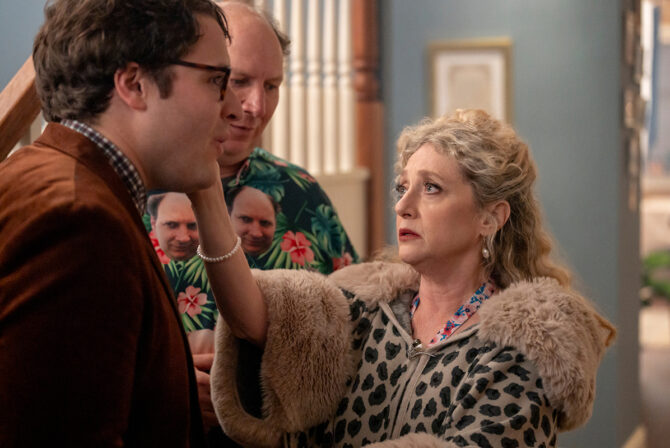As far as I can tell, both of my daughters (ages 7 and 2.5) are cisgender. This means their sex, gender presentation, and gender identities match up with what our culture expects from girls: simply put, they’ve got a female anatomy and they like to wear dresses. While they are statistically the norm when it comes to gender identity, in the wake of so much coverage of transgender kids, and because a friend of mine just told me she’s pretty sure her only child is a girl born in a boy’s body, I’m trying to find a way to teach my kids that not everyone out there experiences the matching up of anatomy and identity that they personally do, and that gender can be more expansive than they (or I) might think.
This topic is so much harder than talking to my kids about “where babies come from.” Identity is less about fact and more about feeling, which can be much harder to explain. The TV shows “Orange Is the New Black” and “Transparent,” as well as Caitlyn Jenner’s public transition, have brought the concept of transgenderism into the spotlight–but my kids don’t watch those shows and aren’t too aware of Jenner. And most people, like me, were raised with the concept of a binary gender system where there are only two options: male or female. As it turns out, there are a whole lot of people (who aren’t necessary transgender) who don’t fit neatly into those two categories.
READ: Target Decides to Phase Out Gendered Advertising
Wonderful communities with resources for families of gender non-conforming kids are now easy to find. Facebook groups, blogs, books, support groups, and camps embrace these children. I’ve read a number of wonderful (and heartbreaking) stories about transgender kids. But there isn’t really much of a roadmap for talking to kids, and particularly cisgendered kids, about how despite the way our culture is set up, gender can be pretty fluid.
I’ve never personally experienced a disconnect in my gender identity. I don’t know what it’s like to be trapped in a body that doesn’t feel right, or have my gender presentation questioned by a stranger on the street, or worse, by a stranger I meet in a gendered public bathroom. This isn’t something I can easily explain to my kids. But, if I’m going to teach my kids to be fair and to accept diversity, I need to explain to them what a person’s identity is, how central that identity is to their soul, and why it’s important that we are aware of how we are, or are not, letting people identify in the ways they choose around us. I’ve been searching for ways to do so appropriately, and in terms they’ll understand. This is no small task but here’s what I put together so far:
1. You are probably not going to find a good book on this (at least not yet).
If I thought finding a body-positive, non-shaming, and empowering book to give to my kids to teach them about sex and sexuality was difficult, finding one that appropriately and respectfully articulates the concept of gender fluidity to a cisgender audience is downright impossible. Like all of the big issues parents are tasked with passing on to the next generation, this is just an on-going conversation you’ll have with your kids. Be honest with them that this is a hard concept to understand sometimes, even for you. Keep talking about it.
READ: My Problem With Those Gender Reveal Parties
2. It’s really easy to conflate sex and gender.
So much of the literature we use to teach kids about their bodies, intercourse, pregnancy, and beyond reinforces the flawed gender binary, and as a result, conflates sex and gender. When sex-ed books show photos or illustrations of what men and women look like based on anatomy, we end up trained to think that a) every person is either a male or a female and b) we can tell which is which based on what that person looks like naked. This isn’t true.
A person’s identity actually has three parts: their sex assigned at birth based on anatomy, their gender identity, and their gender presentation to the world. A person may not present or identify with their gender birth assignment (try explaining that to your friends throwing a “gender reveal party!”). It’s easier just to tell kids what a friend of mine told me: “Everyone looks different. Some boys look like girls, some girls look like boys, some people look like both at once, and some other people aren’t trying to look any which way. It can be confusing, but as long as someone is happy, we just need to treat them nicely.”
3. Check your language.
If you stop and think about it, so much information we receive during the day reinforces gender roles or expectations. Some people are focused on changing that–the reorganization of the Target toy section from the separate “boys” and “girls” toy aisles to just a general toy display is a great start–but so many parts of our life are unconsciously gendered that it will take a lot more to fix everything.
READ: Is It Too Early to Call My Baby a Girl?
Pay attention to language, and consider the powerful but subtle ways to remove unnecessary references to gender when you speak. Many preschool teachers no longer say “boys and girls” when calling the class to attention, and have instead started using gender neutral terms like “all readers come to the rug for story time,” or simply refer to the kids as “friends” or “children.” Doing so de-emphasizes gender in a setting where it’s not really important how a person identifies and, at the same time, includes everyone.
4. Get to know people who aren’t exactly like you
The best way to understand someone else’s experience is by exposing yourself to them. If you don’t know any transgender or gender fluid people, consider diversifying your child’s bookshelf with titles written by or about transkids like “Play Free,” “My Princess Boy” or “All I Want to Be Is Me.”
5. Understand why this is important
Whether you like it or not, gender diversity exists. Accepting that gender is expansive and not binary for a cisgendered person is like a white person accepting that others are affected by racism. Just because you don’t think you experience it, doesn’t mean it isn’t happening or shouldn’t be a part of your world’s view.
READ: Why My Baby’s Sex Doesn’t Matter
Accepting that we can’t know someone else’s experience but making space for it alongside ours is a big step for lots of adults. It’s easier for kids who have less experience with cultural standards and gender bias. But whether you learn this as a child or an adult, it’s a crucial part of being an empathetic person and fully understanding the world we live in—probably the most important lesson we can teach our kids.







